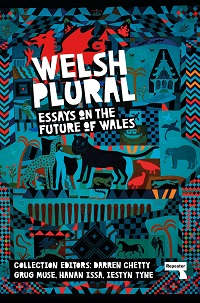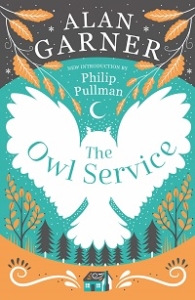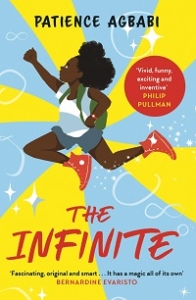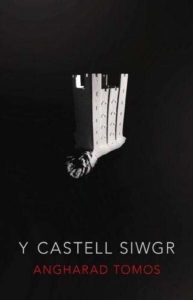
This article is in the Beyond The Secret Garden Category
Beyond the Secret Garden: ‘It Starts in Wales’
In the latest in the Beyond the Secret Garden series, which looks at the representation of black, Asian and minority ethnic voices in British children’s literature, Darren Chetty and Karen Sands-O’Connor explore the works of Welsh authors.
In March 2022, Repeater Books publishes Welsh (Plural): Essays on the Future of Wales edited by Darren Chetty, Hanan Issa, Grug Muse and Iestyn Tyne. Eight of the nineteen essayists are people of colour and a number of them refer to their childhood in Wales. Children’s literature set in Wales and featuring racially minoritised people is still rare. Darren has been told by a number of literary agents that British children’s stories that feature a Black or brown main character continue to be a harder thing to sell to publishers. At the same time, best-selling Welsh author Sophie Anderson reports having been told by publishing professionals that books with a strong Welsh subject matter might be considered niche and potentially have a more limited market, especially internationally. Books set in Wales and featuring characters of colour potentially face both obstacles, and very few writers can afford not to take such commercial pressures into account, when writing books.
 Many children’s and young adult novels written before the nineties centred on the difference between Welshness and Englishness, or on the connection to British myth and legend – from King Arthur to the Mabinogi – or both, as in Alan Garner’s The Owl Service (1967) or Susan Cooper’s The Dark is Rising sequence (1965-77). Cooper’s Silver on the Tree won the 1978 Tir na n-Og Award and includes Manny Singh, a Sikh boy from an Indian family who could be read as a plot device to allow Cooper to build connections between real-world racism and the magical world of the Dark. Wales, that was both colonized by the English and a place of legend and magic, continued to make it a particularly useful setting for English authors as they began to think about broadening the definition of Britishness. Philip Pullman’s young adult novel, The Broken Bridge (1990), about a girl with an English father and a Haitian mother, living in Wales, is one of Gothic fear over mixed-race liaisons. Ginny (the main protagonist) is haunted by the ghosts of colonialism and racism. She tries to use Voodoo to solve her problems, but only ends up in danger. In the end, she takes it upon herself to ‘heal’ her family, but can only do this once she rejects her Haitian mother: ‘I’ve never had her, so I can’t miss her really,’ (p207) she says. Ginny stops trying to connect with her mother in any way, including through Voodoo. She ends the novel by embracing the beauty of the land around her and the Welsh language of the people of the town, calling Bore da to her as she passes by (p218).
Many children’s and young adult novels written before the nineties centred on the difference between Welshness and Englishness, or on the connection to British myth and legend – from King Arthur to the Mabinogi – or both, as in Alan Garner’s The Owl Service (1967) or Susan Cooper’s The Dark is Rising sequence (1965-77). Cooper’s Silver on the Tree won the 1978 Tir na n-Og Award and includes Manny Singh, a Sikh boy from an Indian family who could be read as a plot device to allow Cooper to build connections between real-world racism and the magical world of the Dark. Wales, that was both colonized by the English and a place of legend and magic, continued to make it a particularly useful setting for English authors as they began to think about broadening the definition of Britishness. Philip Pullman’s young adult novel, The Broken Bridge (1990), about a girl with an English father and a Haitian mother, living in Wales, is one of Gothic fear over mixed-race liaisons. Ginny (the main protagonist) is haunted by the ghosts of colonialism and racism. She tries to use Voodoo to solve her problems, but only ends up in danger. In the end, she takes it upon herself to ‘heal’ her family, but can only do this once she rejects her Haitian mother: ‘I’ve never had her, so I can’t miss her really,’ (p207) she says. Ginny stops trying to connect with her mother in any way, including through Voodoo. She ends the novel by embracing the beauty of the land around her and the Welsh language of the people of the town, calling Bore da to her as she passes by (p218).
But the idea of a character having to reject aspects of their racialised or cultural background is resisted by other writers. Catherine Johnson, of Welsh and Jamaican heritage, grew up in London but had a deep connection to Wales and set several of her early novels there, including The Last Welsh Summer (1993). Like Pullman’s novel, Johnson’s protagonist Suki sometimes feels like an outsider in Wales because of her Guyanese heritage. But despite overhearing one of her cousin’s friends ask, ‘how can she be black and Welsh, she’s foreign, isn’t she?’ (p16), Suki knows her connection to Wales is real. ‘Even if I don’t belong,’ she concludes the novel by saying, ‘this belongs to me’ (p116). The land itself welcomes Suki even if the people don’t always. Similarly, Louise, Johnson’s protagonist in Other Colours (1993), runs away from Wales to London because she is the only brown-skinned girl in her town and people ‘stare at me in Safeway’ (p17). But through her positive interaction with an art teacher in London and negative interaction with skinheads, Louise comes to realise that she doesn’t belong in London simply because she is Black. But she brings back images of multiracial London, ‘the woman in a sari with a pattern of gold and blue… the dark-brown man with the scars on his face… the two black girls with sculpted hairdos hard like shells’ (p135) to ‘keep in my head for the long white Welsh summer up ahead’ (p135). ‘There is a future, even if it starts in Wales’ (p137), she thinks, but it is a future she has to create herself in order to belong.
Louise’s pronouncement at the end of Other Colours could have been the opening line of Patience Agbabi’s The Infinite (Canongate,  2020). In fact, in the opening chapter, the protagonist Elle says, ‘Today I got a text from the future!’ (p11). Agbabi spent her teenage years in North Wales, and the setting of her novel about 12-year-old Elle shows a multiracial town of Italians, Nigerians, Poles and British people who don’t always get along (windows of the Polish deli are smashed and graffitied). But Elle, autistic, Nigerian-British, and one of the best sprinters in her school, goes to the future to make the world better. And when she returns home to her grandmother’s pepper soup, she can see how her own town’s future, and own world’s future, might change if people like her decide to do something: ‘Today is a special day… I can help save the planet… Maybe one day there’ll be no more fish in the sea. Or maybe human beings will fall in love with Planet Earth. The future needs the past to become itself’ (p233-4).
2020). In fact, in the opening chapter, the protagonist Elle says, ‘Today I got a text from the future!’ (p11). Agbabi spent her teenage years in North Wales, and the setting of her novel about 12-year-old Elle shows a multiracial town of Italians, Nigerians, Poles and British people who don’t always get along (windows of the Polish deli are smashed and graffitied). But Elle, autistic, Nigerian-British, and one of the best sprinters in her school, goes to the future to make the world better. And when she returns home to her grandmother’s pepper soup, she can see how her own town’s future, and own world’s future, might change if people like her decide to do something: ‘Today is a special day… I can help save the planet… Maybe one day there’ll be no more fish in the sea. Or maybe human beings will fall in love with Planet Earth. The future needs the past to become itself’ (p233-4).
Inaugural Children’s Laureate Wales Eloise Williams has included characters of colour in two of her middle grade novels set in Wales published by Firefly, Seaglass (2018) and Wilde (2020). From the same publisher, Daydreams and Jellybeans is a book of poetry written by Alex Wharton and illustrated by Katy Riddell (Firefly, 2021). Throughout the book, illustrations of children accompany the poems, including Black children and another child wearing a hijab. The poems are mostly about common childhood experiences and animals. However, ‘Trapper Boy’ is about the children, ‘as young as four’, who were employed in coal mines in the first half of the nineteenth century.
A number of picture books with Welsh connections have been published in the past decade. The Girls and its sequel The Boys (2018 and 2021, Little Tiger) by Swansea-born Lauren Ace and Cardiff-based Jenny Løvlie feature a number of characters of colour. Author Atinuke was born in Nigeria and lives in Wales. Books such as Splash, Anna Hibiscus! illustrated by Lauren Tobia (Walker, 2013) are set in Africa. Your Hair is Your Crown by Jessica Dunrod (2020) is published by Dunrod’s own company, Lily Translates. We see Hope with her white mother from Cardiff and her Black father from St Kitts. The story involves Hope encountering Dewi the Dragon and Afrodite, a Black mermaid, before flying over Cardiff. Hope learns that there is magic to be found in the curls of her hair. As such it is the only fiction picture book that features a person of colour and is explicitly set in Wales.
Recent non-fiction books about Wales indicate a broadening of perspectives. Published just five years ago, Horrible Histories: Wales by Terry Deary and illustrated by Martin Brown (Scholastic, 2017) does not mention racially minoritised people at all save for the unsubstantiated story of Madog ab Owain leading a group that travelled to North America and intermarried with Native Americans in the twelfth century. Patagonia is also mentioned, but only to say Welsh people moving there ‘do well’ and set up tea houses (p104). However, following the 2021 report of the Black, Asian and Minority Ethnic Communities, Contributions and Cynefin in the New Curriculum Working Group chaired by Professor Charlotte Williams OBE, a number of non-fiction books have been published by Welsh publishers that do pay some attention to people of colour.
The cover of History Grounded by Elin Jones (Gwasg Carreg Gwalch, 2021) features a bilingual Black Lives Matter banner next to Coal not Dole, Votes for Women and Cofiwch Dryweryn (remember Trywern). Jones includes a two-page spread on Wales’ part in the slave trade, including a map showing the location of slaver families who were compensated by the British government after abolition. Less is said about the long-standing Black and Asian communities in Wales, though a page is devoted to Betty Campbell, the first Black headteacher in Wales whose statue was unveiled in Cardiff in 2021. 10 Stories from Welsh History, written by Ifan Morgan Jones and illustrated by Telor Gwyn (Rily, 2021) also mentions Campbell, along with diplomat Abdulrahim Abby Farrah and Colin Charvis, the first Black man to captain the Welsh rugby union team, in a section entitled ‘multiculturalism’ that also refers to Yemeni, Romani, Italian, and Jewish communities. Again, Welsh involvement in the slave trade is acknowledged. The 1919 ‘Race Riots’ are given a double-page spread, concluding that ‘it’s important that we remember this history so that we never face such a situation again’ (p27).
Fighting for Fairness: Righting Wrongs and Battling Prejudice by Greg Lewis (Magic Rat, 2021) is a 68 page non-fiction book, with short sections organised around significant figures in Welsh history: Eddie Parries, the first Black footballer to play for Wales; Clive Sullivan who captained the Great Britain rugby league team; Billy Boston, one of a number of Black players overlooked by Welsh rugby union clubs, whose record of most tries for Wigan has stood for over forty years; Cameroon-born writer Eric Ngalle Charles; Frances Batty Shand, Jamaican-born child of John Shand, a Scottish slaver, and Frances Brown, an enslaved woman (described as ‘a plantation owner’ and ‘a slave’). Frances Batty Shand founded Cardiff’s oldest charity, the Association for Improving the Social and Working Conditions of the Blind, which became known as the Cardiff Institute for the Blind. Lewis’ book is noteworthy for not skipping over Crimean War nurse Betsi Cadwaladr’s time in the Caribbean, as other accounts of her life have often done. Indeed, a final section entitled ‘Slavery and Wales’ mentions Welsh abolitionists as well as slaver Thomas Picton and Henry Morton Stanley, who worked for Leopold II, and the recent conversations in Wales about statues erected to honour them.
The picture book Shirley: The Dazzling Life of Shirley Bassey written by Bethan Gwanas and illustrated by Hanna Harris (Llyfrau Broga, 2021) is part of the Welsh Wonders picture book series. Bassey’s journey from Tiger Bay, Cardiff to Monaco, via London and Las Vegas is chronicled; challenges and successes are included. In a spread where Bassey, her siblings and her parents are depicted, the text reads, ‘Shirley’s father was a sailor from West Africa. Her mother had moved to Tiger Bay to avoid people who didn’t like her children because of the colour of the skin.’ (p3) Bassey is also included in Great Britons: 50 Amazing People Who Have Called Britain Home by Welsh writer and regular Books for Keeps contributor Imogen Russell Williams. The book is illustrated by Sara Mulvany (Nosy Crow, 2021).
It is important to acknowledge that Wales has two official languages, and indeed some of the most interesting children’s and YA fiction in recent times has come out of Welsh language publishing. Welsh language publisher Y Lolfa has recently published a number of books featuring people of colour in Welsh settings. Sw Sara Mai by Casia Wiliam (2020), a middle grade novel features a young Sara Mai who lives in South Wales with her Zoo-owning parents, and describes herself as ‘dark brown, somewhere between mum’s skin colour and Dad’s skin colour’. Pam? by Luned and Huw Aaron (2021) features a young boy of colour who is forever asking his parents ‘Why?’. The Crown in the Quarry (Carreg Gwalch 2019), first published in Welsh as Y Goron yn y Chwarel and translated by Susan Walton, is one of a number of historical novels written by poet and Archdruid of Wales, Myrddin ap Dafydd. Sardar arrives in Blaenau Ffestiniog as a wartime evacuee from Liverpool having migrated with his family from the Punjab. The book describes the racism Sardar encounters, but also the friendship and solidarity offered by his new friends as he settles in and learns a third language. An image of his vocabulary book is shown where he translates Welsh into Punjabi. As well as racism, colonialism and class exploitation emerge as central themes of the book, which includes references to the Amritsar massacre as well as English landlords who exploited Welsh workers. As such it provides an important space to talk about the complexities of Welsh history in relation to race and nationhood.
 Welsh children’s literature scholar Siwan Rosser informs us that three Welsh translations of Uncle Tom’s Cabin had been published by 1853. However, Y Castell Siwgr (Gwasg Carreg Gwalch, 2020) by Angharad Tomos is, according to Rosser, the first Welsh children’s novel to deal directly with Wales and the slave trade. The stories of two teenage girls are offered; Dorcas, who is forced to serve at Penrhyn Castle in Gwynedd and Eboni, an enslaved person on the Penrhyn family plantation in Jamaica. The two stories are told separately; the reader is invited to observe the similarities and differences between class oppression and enslavement whilst gaining insight into one of the Welsh families who made a fortune as slavers.
Welsh children’s literature scholar Siwan Rosser informs us that three Welsh translations of Uncle Tom’s Cabin had been published by 1853. However, Y Castell Siwgr (Gwasg Carreg Gwalch, 2020) by Angharad Tomos is, according to Rosser, the first Welsh children’s novel to deal directly with Wales and the slave trade. The stories of two teenage girls are offered; Dorcas, who is forced to serve at Penrhyn Castle in Gwynedd and Eboni, an enslaved person on the Penrhyn family plantation in Jamaica. The two stories are told separately; the reader is invited to observe the similarities and differences between class oppression and enslavement whilst gaining insight into one of the Welsh families who made a fortune as slavers.
The recent publication of Y Pump (The Five) a series of five interlocking YA narratives set in North Wales and each written as collaborations between authors and co-authors, is a fascinating development in publishing, Welsh and beyond. Series editor Elgan Rhys drew on his theatre background to develop a project that has both collaborative storytelling and young writer development at its heart. The series writers were mentored by Manon Steffan Ros. Both Aniq by Marged Elin Wiliam and Mahum Umer and Cat by Megan Angharad Hunter and Maisie Awen include young people of colour as protagonists who feature in the other three books about Year 11 students at a school on the North Wales coast. The books’ co-authors are roughly the same age as the characters portrayed and played integral roles in the writing process. As Elgan Rhys writes in Two Rivers in a Common Spring, a book celebrating 60 years of the Books Council of Wales, ‘The authors are there, but we need to go beyond our habits, in order to uncover and invite in the new, contemporary and authentic voices in today’s Wales.’ (p224)
Thanks to Dr Siwan Rosser, Jo Bowers, Marvin Thompson, Jessica Dunrod, Penny Thomas, Sian Chapman and LLeucu Siencyn for their time and support with this column.
Karen Sands-O’Connor is the British Academy Global Professor for Children’s Literature at Newcastle University. Her books include Children’s Publishing and Black Britain 1965-2015 (Palgrave Macmillan, 2017).
Darren Chetty is a teacher, doctoral researcher and writer with research interests in education, philosophy, racism, children’s literature and hip hop culture. He is a contributor to The Good Immigrant, edited by Nikesh Shukla and the author, with Jeffrey Boakye, of What Is Masculinity? Why Does It Matter? And Other Big Questions. He tweets at @rapclassroom.
Books Mentioned
Welsh (Plural): Essays on the Future of Wales, Darren Chetty, Hanan Issa, Grug Muse, Iestyn Tyne (eds).
The Owl Service, Alan Garner, HarperCollins Children’s Books
Silver on the Tree, Susan Cooper, Puffin
The Broken Bridge, Philip Pullman, Macmillan Children’s Books
The Last Welsh Summer, Catherine Johnson, O/P
Other Colours, Catherine Johnson, O/P
The Infinite, Patience Agbabi, Canongate
Seaglass, Eloise Williams, Firefly Press
Wilde, Eloise Williams, Firefly Press
Daydreams and Jellybeans, Alex Wharton, ill. Katy Riddell, Firefly Press
The Girls, Lauren Ace, ill. Jenny Løvlie, Little Tiger
The Boys, Lauren Ace, ill. Jenny Løvlie, Little Tiger
Splash, Anna Hibiscus!, Atinuke, ill. Lauren Tobia, Walker Books
Your Hair is Your Crown, Jessica Dunrod, Lily Translates
Horrible Histories: Wales, Terry Deary, ill. Martin Brown, Scholastic
History Grounded, Elin Jones, Gwasg Carreg Gwalch
10 Stories from Welsh History, Ifan Morgan Jones, ill. Telor Gwyn, Rily Publications Ltd
Fighting for Fairness: Righting Wrongs and Battling Prejudice, Greg Lewis, Magic Rat
Shirley: The Dazzling Life of Shirley Bassey, Bethan Gwanas, ill. Hanna Harris, Llyfrau Broga Books
Great Britons: 50 Amazing People Who Have Called Britain Home, Imogen Russell Williams, ill. Sara Mulvany, Nosy Crow
Sw Sara Mai, Casia Wiliam, Y Lolfa
Pam? Luned and Huw Aaron, Y Lolfa
The Crown in the Quarry / Y Goron yn y Chwarel, Myrddin ap Dafydd, Gwasg Carreg Gwalch
Y Castell Siwgr, Angharad Tomos, Gwasg Carreg Gwalch




